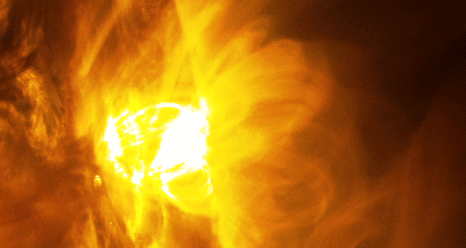Solar Storm To Hit This Week As Hole On Sun Targets Earth

A cosmic forecasting site predicted that Earth will be hit by a solar storm later this week. According to the site, the solar storm will be spewed out from a hole on the Sun’s surface that’s currently facing Earth.
The forecast for this week was provided by SpaceWeather.com, a site dedicated to monitoring cosmic weather and its effects on Earth. Recently, the site spotted coronal holes on the Sun’s surface. These holes are regions that are no longer affected by the Sun’s magnetic field, allowing solar winds to escape.
Due to the rotation of the Sun, one of its coronal holes has been oriented toward the direction of Earth. SpaceWeather.com predicted that the solar winds and storms escaping from this hole will hit Earth starting on Aug. 1.
“The first of the streams is expected to arrive on Aug. 1st, followed by two more in rapid succession on Aug. 4th,” the site stated. “Polar geomagnetic unrest and possibly some minor magnetic storms are possible on those dates.”
According to the site, the approaching solar storm will make auroras or polar lights more prominent. Those in the southern hemisphere will be able to witness the beautiful natural light display within the next couple of days.
Aside from the polar lights, solar storms have other dangerous effects on Earth. According to experts, a direct hit from a solar storm could cripple Earth’s electrical facilities. Cosmological researcher Randall Carlson explained that the massive surge of energy from a solar storm could cause electrical grids to blow out.
Once this happens, facilities and equipment that rely on electricity will be rendered useless. Aside from the lack of power, affected areas will also have no means of communication.
“Power plants would go down, substations would go down, transmission lines, cellphone towers, would go down,” Carlson told RT. “There would pretty much be a collapse of the electronic grid system.”
“This would mean that large portions of the planet could be plunged into total darkness, with no electricity and no means of communication,” he added. “For portions of Earth, it would be like going back to the dark ages again because we became so dependent.”
© Copyright IBTimes 2024. All rights reserved.




















